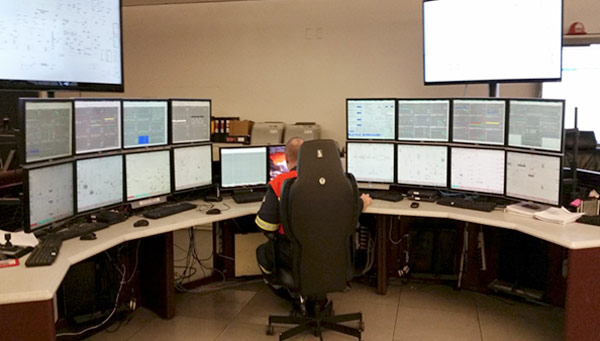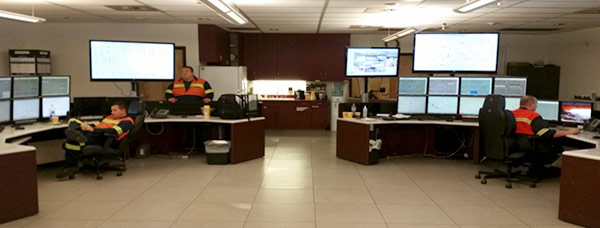Rio Tinto Kennecott Case Study: Alarm Rationalization and Management, and More
The following was written by Matt Martin, Superintendent – Production Control of Rio Tinto Kennecott.
At Rio Tinto Kennecott, we mine essential elements that make modern living possible. From medicine, food and shampoo, to cell phones, computers, CAT scans and hybrid electric cars, nearly everything you use today relies on materials that we produce.
Our mine has been a fixture in the Salt Lake Valley for more than 109 years. You may be surprised to know that we are the largest private economic driver in Utah. No other private sector operation has generated more production, exports, income and employment than Kennecott. As such, we take our responsibility to be a strong community partner seriously, through strategic partnerships, foundation contributions and charitable giving.
We also believe in being stewards of the land. Wherever possible, we prevent, or otherwise minimize, mitigate or remediate any potentially harmful effects of our operations on the environment. This practice creates and sustains our business value and reputation. We set self-imposed environmental targets to drive continual improvement. Through our commitment and actions, we strive to be a leader in environmental performance by demonstrating good management of natural resources, responsibly reducing our environmental footprint and exceeding community expectations for sustainable development.
HOW WE GOT HERE
Since 2005 we have been working on projects specific to control room optimization. We arranged to have UCDS, a member of the Abnormal Situation Management (ASM) Consortium, to perform a Gap Analysis to measure our control room against the ASM accepted standard. Once completed, and at my suggestion, we put together a steering committee comprised of plant leadership and advisory staff to identify the main issues that should be addressed to raise the standard of our control room performance and management’s expectations. The steering committee then identified from the Gap Analysis the projects we should initiate to begin the process of closing those gaps. These decisions then led to a series of work performed by UCDS to guide us in our endeavors.
GRAPHICS
We committed to develop a new standard for smelter graphics using the ASM standard for gray-scale graphics that utilize color only to highlight abnormal conditions. We then appropriated the help of another ASM consultant to develop our displays and objects using their library of graphical objects and expertise on graphical development. We utilized Control Room personnel to develop the graphics pages to pass on to our graphics development contractor following a rigid quality control standard. We chose to use the control room personnel in this project as suggested by the ASM consultants and to ensure that we followed a user driven and accepted design.
CONTROL ROOM
UCDS had a lot of issues with our existing control room, mostly due to the environment it was in, which they felt would not be conducive to good ergonomics. We had UCDS develop a report to assist us in identifying the location of a new control room as well as the detail of the specific requirements for a “best practice” control room. We gave them 3 locations for a new control room; they then developed layouts along with a general cost for each to assist the steering committee in the decision of where to build the new control room. With this, the steering committee along with the SLT identified the location for the new control room. UCDS then developed a detail design for the new control room that was used as a guide for construction.
ALARM RATIONALIZATION AND MANAGEMENT
UCDS developed a document to lead us into Alarm Rationalization and Management that we used to develop a Smelter Alarm Standard and Philosophy and to guide us with managing the performance of alarms on our consoles. As part of this effort, I completed my first two Six Sigma projects to bring Consoles 701 and 702 into a “stable” performance. The Smelter Alarm Standard is written into a Standard Operating Procedure that identifies the appropriate method for rationalization of alarms based on criticality and time to identify the proper priority and response. We have maintained these consoles at a “Stable” performance since the rationalization and will continue with a full rationalization now that we have completed the migration to Delta V.
HUMAN FACTORS
Once completed with the graphics and migration, our focus turned to the most important assets we have, our people. Human Factors is a science that is quickly becoming an important part of the cultural changes necessary to successfully and safely operate a plant such as ours. Most of this science is about relatively simple habits and behaviors used by the Control Room Specialists using the tools provided by management to make good decisions following established procedures that reduce our risk of making errors that contribute to unsafe conditions.
STAFFING ASSESSMENT
UCDS performed a staffing assessment which we used as a basis for the development of personnel once we had completed most of our initiatives. As we improved in our ability to operate more confidently because of these initiatives, it enabled our Control Room Specialists to perform at a much higher level. Using the information from the assessment aided the Smelter in determining how to set up the plant consoles and area designations for reducing the number of Control Room Specialists to operate the plant to a total of 4. This reduction then allowed us to put field operators who were performing double duty at the consoles and in the field back into the field full time to provide greater operational support to the teams.
Matt Martin, Superintendent – Production Control, Rio Tinto


